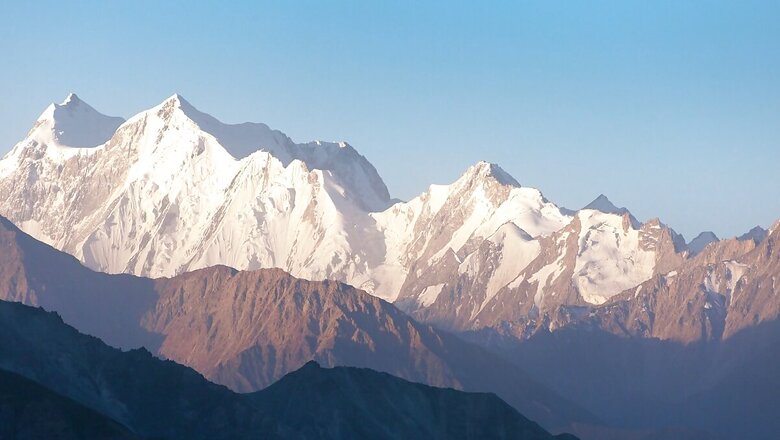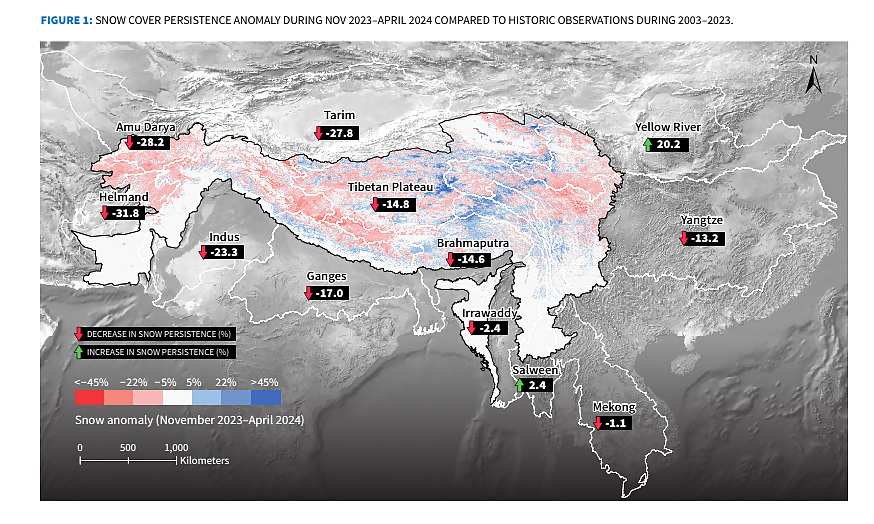
views
The snow persistence over the Hindu Kush Himalayan region fell to below-average levels this winter, raising concerns over decreased water availability downstream in the coming months. According to the report led by Nepal-based International Centre for Integrated Mountain Development (ICIMOD), the snow cover over the region has been the second-lowest in the last two decades.
Snow persistence essentially means how long the snow has remained on the ground, and this value determined during November to April tends to fluctuate every year.
Researchers at the inter-governmental institution have been monitoring the seasonal snow for 12 major river basins in the Hindu Kush since 2003 using NASA’s Terra and Aqua satellites. In fact, their data over the past 22 years points to a decreasing below-average snow persistence from east to west in the region. “The Hindu Kush Himalayan region experienced a significant anomaly in 2024,” the latest report noted.
The Ganga basin which is normally known to show significant fluctuations every year, recorded the lowest snow persistence this winter with a value of 17 per cent. This was worse than 2018, when it was recorded at 15.2 per cent, said ICIMOD. The snow cover was notably below-normal at 14.6 per cent in the Brahmaputra basin too, which flows through Arunachal Pradesh, Assam and Bangladesh before it joins the Bay of Bengal.
There is a significant decrease in the snow persistence in the Indus River basin as well, where it fell 23.3 per cent below normal levels. The snow cover was found to be the lowest in the Amu Darya River basin in Central Asia – almost 28.2 per cent below normal. This region is worst-impacted by retreating glaciers, and has significantly shrunk over the years.

Less snow persistence means there will be less run-off when the weather warms, and thus, decreased freshwater availability for people living downstream. The researchers have urged relevant agencies to take proactive measures and update water management plans to accommodate a potential water stress situation that may arise in the coming months.
Snowmelt contributes roughly 23 per cent of the annual runoff in the 12 major river basins of the Hindu Kush Himalayan region. Scientists have been keenly tracking the frozen water (cryosphere) because it is a critical source of freshwater for over 240 million people living in the Hindu Kush region and benefits around 1.65 billion individuals downstream.
The rising global temperatures and climate change has significantly altered the snowfall patterns, and led to erratic precipitation especially over the Himalayan range. The year 2023 also ended as the warmest year on record for the world with global average near-surface temperatures at 1.4℃ above the pre-industrial levels.
To make matters worse, the 2023-24 winter began under the shadow of El-Niño – a global climate phenomenon which fuels heat in the atmosphere. The snow drought in the Western Himalayas in January was so stark that it set the alarm bells ringing. However, the situation improved slightly with a delayed spell of snowfall over the region in late Feb-March.

















Comments
0 comment